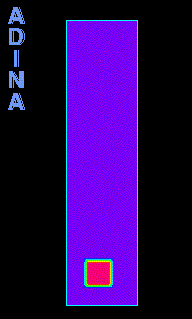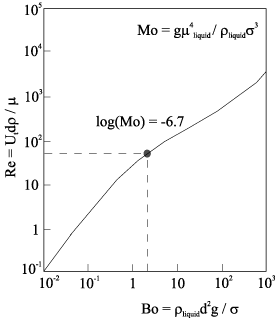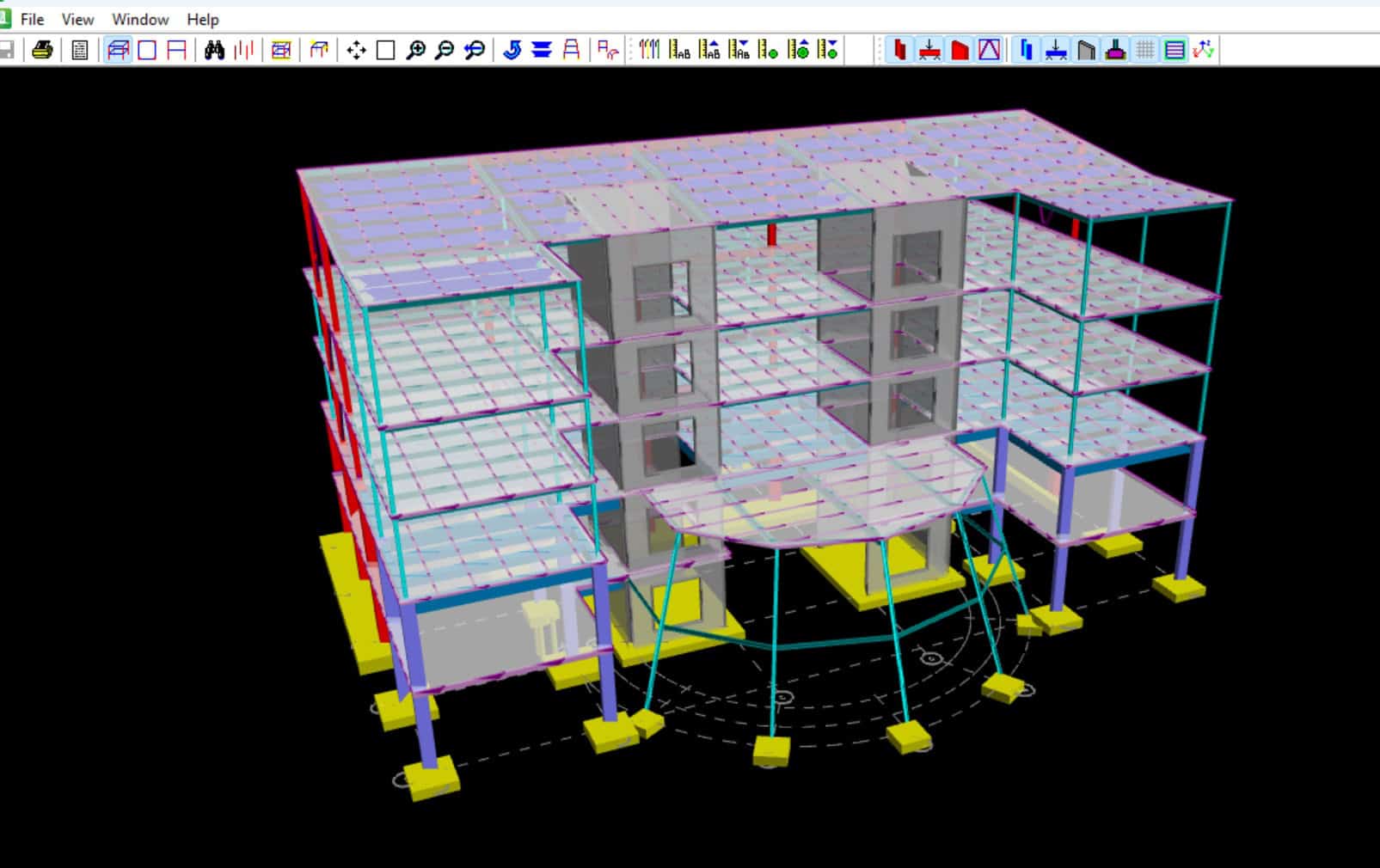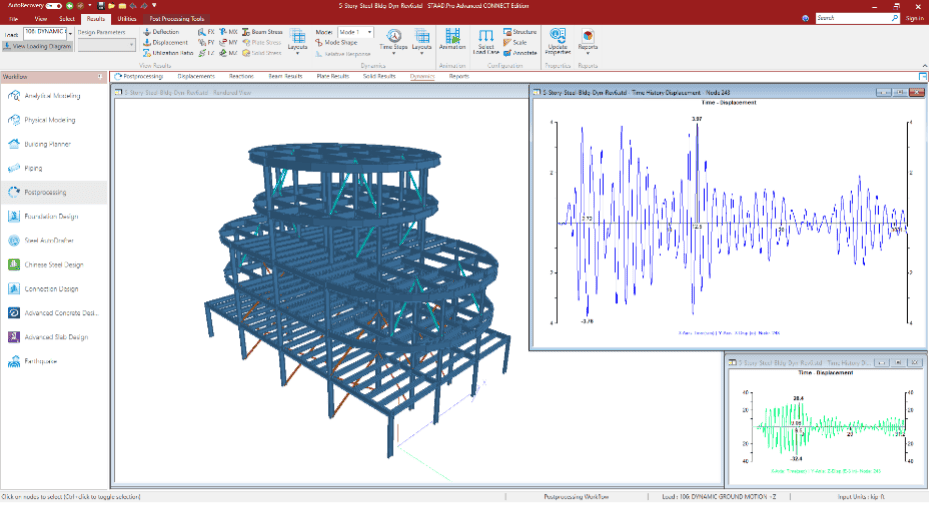The VOF surface-capturing method, available in ADINA 8.1, can be used to study the motion of bubbles due to buoyant and interfacial forces. The animation below shows the ascension of an air bubble in oil. Both the air and the oil are modeled as incompressible Newtonian fluids. The model is two-dimensional. The initial shape of the bubble is a 3 mm square. The oil container is 10 mm in width and 40 mm in height. The mesh has 17 x 67 quadrilateral FCBI (flow condition based interpolation) elements.


As the bubble starts to move upwards due to buoyancy, its shape changes to an ellipsoid due to the combined effect of surface tension and gravity forces. The graph next to the animation is adapted from R. Clift, J.R. Grace and M.E. Weber, Bubbles, Drops and Particles, Academic Press, New York, 1978. It allows us to check the terminal velocity of the bubble obtained with ADINA-F against the theory. The Bond number (Bo) in the abscissa represents the ratio of buoyancy and interfacial forces. The graph shows a curve for a constant Morton number (Mo), which is used to characterize the fluid. A Reynolds number (Re) equal to 50 is obtained from the graph: this is equivalent to a terminal velocity of 17 cm/sec, compared to 16 cm/sec obtained with ADINA-F.




